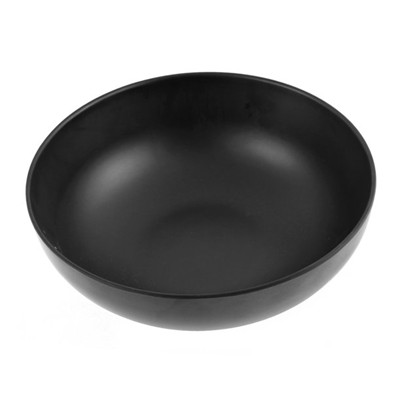-
Cangzhou Yulong Steel Co., Ltd.
-
Phone:
+86 13303177267 -
Email:
admin@ylsteelfittings.com
- English
- Arabic
- Italian
- Spanish
- Portuguese
- German
- kazakh
- Persian
- Greek
- French
- Russian
- Polish
- Thai
- Indonesian
- Vietnamese
- Zulu
- Korean
- Uzbek
- Hindi
- Serbian
- Malay
- Ukrainian
- Gujarati
- Haitian Creole
- hausa
- hawaiian
- Hebrew
- Miao
- Hungarian
- Icelandic
- igbo
- irish
- Japanese
- Javanese
- Kannada
- Khmer
- Rwandese
- Afrikaans
- Albanian
- Amharic
- Armenian
- Azerbaijani
- Basque
- Belarusian
- Bengali
- Bosnian
- Bulgarian
- Catalan
- Cebuano
- China
- China (Taiwan)
- Corsican
- Croatian
- Czech
- Danish
- Esperanto
- Estonian
- Finnish
- Frisian
- Galician
- Georgian
- Kurdish
- Kyrgyz
- Lao
- Latin
- Latvian
- Lithuanian
- Luxembourgish
- Macedonian
- Malgashi
- Malayalam
- Maltese
- Maori
- Marathi
- Mongolian
- Myanmar
- Nepali
- Norwegian
- Norwegian
- Occitan
- Pashto
- Dutch
- Punjabi
- Romanian
- Samoan
- Scottish Gaelic
- Sesotho
- Shona
- Sindhi
- Sinhala
- Slovak
- Slovenian
- Somali
- Sundanese
- Swahili
- Swedish
- Tagalog
- Tajik
- Tamil
- Tatar
- Telugu
- Turkish
- Turkmen
- Urdu
- Uighur
- Welsh
- Bantu
- Yiddish
- Yoruba

Sep . 13, 2024 12:02 Back to list
weld outlet fittings
Understanding Weld Outlet Fittings An Essential Component in Piping Systems
Weld outlet fittings play a vital role in piping systems across various industries, from oil and gas to water treatment. Their primary function is to facilitate the connection of a branch pipe to the main pipeline. Utilizing a weld outlet fitting ensures a robust and leak-proof connection, which is essential for maintaining the integrity and efficiency of fluid transport systems.
A typical weld outlet fitting features a circular flange or nipple that is welded directly to the main pipe. This design allows for the seamless integration of additional piping without requiring extensive modifications to the existing system. The fitting is available in various pipe sizes and materials, including carbon steel, stainless steel, and alloy materials, making it adaptable for diverse applications and environments.
One of the significant advantages of using weld outlet fittings is their ability to withstand high pressures and temperatures. Unlike threaded fittings, which can become weak points in a system, welded connections provide enhanced strength and reliability. This is particularly important in industries that handle hazardous or corrosive fluids, where even the slightest leak can lead to catastrophic outcomes.
weld outlet fittings

When choosing weld outlet fittings, it is essential to consider several factors, including the application, the type of fluid being transported, and the operating environment. The material selection is crucial; for instance, stainless steel fittings are preferable for corrosive fluids due to their resistance to rust and degradation. Additionally, understanding the pressure and temperature requirements of the system helps ensure that the selected fitting is appropriate for the job.
Installation of weld outlet fittings requires specialized skills and equipment. Proper welding techniques must be applied to avoid any compromises in the fitting's structural integrity. It's advisable to have qualified personnel carry out the installation, as improper welding can lead to future maintenance issues and potentially costly repairs.
Furthermore, adherence to industry standards and regulations is critical when working with weld outlet fittings. This ensures that the installation meets safety and performance guidelines, thereby reducing the risk of accidents. Regular inspections and maintenance of the fittings and the associated pipeline are also necessary to prolong their lifespan and ensure continuous, safe operation.
In conclusion, weld outlet fittings are indispensable components in modern piping systems. Their simplicity of design and robustness make them ideal for a wide range of applications. Understanding their functionality, selection criteria, and installation processes can significantly enhance the performance and safety of piping systems. Whether in an industrial, commercial, or residential setting, investing in high-quality weld outlet fittings will yield long-term benefits, ensuring efficient and secure fluid transportation.
Latest news
-
ANSI 150P SS304 SO FLANGE
NewsFeb.14,2025
-
ASTM A333GR6 STEEL PIPE
NewsJan.20,2025
-
ANSI B16.5 WELDING NECK FLANGE
NewsJan.15,2026
-
ANSI B16.5 SLIP-ON FLANGE
NewsApr.19,2024
-
SABS 1123 FLANGE
NewsJan.15,2025
-
DIN86044 PLATE FLANGE
NewsApr.19,2024
-
DIN2527 BLIND FLANGE
NewsApr.12,2024
-
JIS B2311 Butt-Welding Fittings LR/SR 45°/90° /180°Seamless/Weld
NewsApr.23,2024











